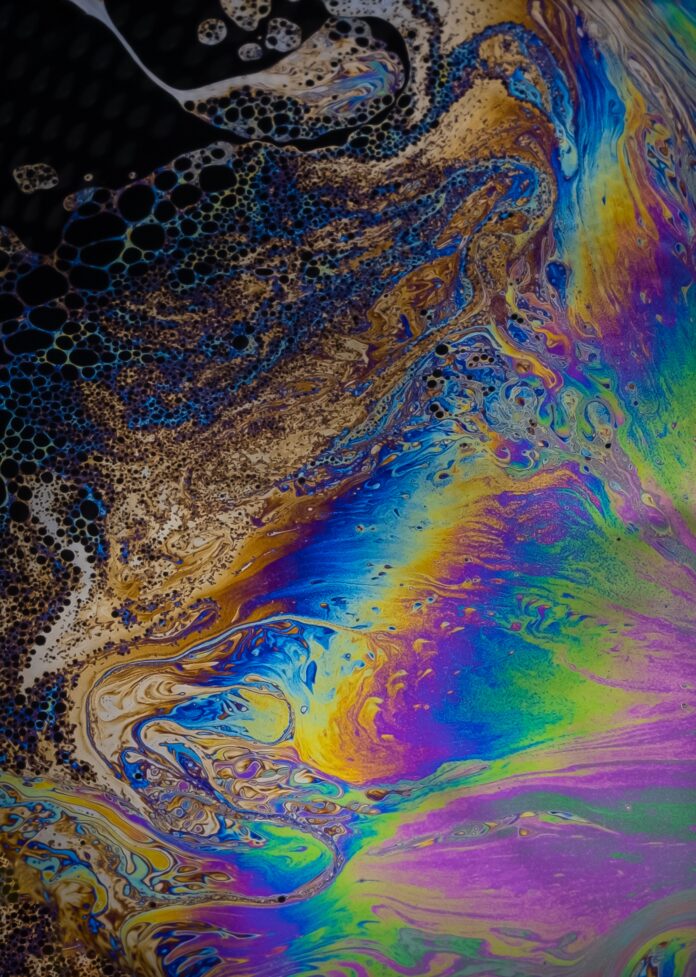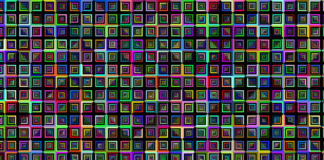Remote Sensing: Exploring the World from Afar
Remote Sensing is a transformative technology that has revolutionized our ability to explore and understand the Earth’s surface and its surrounding environment. This field encompasses a diverse array of techniques and methodologies that allow us to gather information about the planet’s physical, biological, and chemical attributes without direct physical contact. Instead, it relies on the capture and analysis of data from a distance, using a variety of sensors and platforms, such as satellites, aircraft, drones, and ground-based instruments. By harnessing the power of electromagnetic radiation, Remote Sensing enables us to unveil hidden patterns, monitor changes over time, and make informed decisions across numerous disciplines, ranging from environmental monitoring to disaster management, urban planning, agriculture, and beyond.
At its core, Remote Sensing involves the acquisition and interpretation of data about the Earth’s surface and atmosphere through the use of sensors that are designed to capture specific wavelengths of electromagnetic radiation. This radiation includes visible light, infrared, microwave, and other spectra, each carrying unique information about the target being observed. The journey of remote sensing begins with the emission or reflection of electromagnetic energy from a source, which then interacts with the target and its environment. Subsequently, the energy is detected by sensors and recorded as digital data, which can be processed, analyzed, and transformed into valuable insights about the Earth’s features and processes.
The evolution of Remote Sensing dates back to the mid-19th century when the first aerial photographs were captured from hot air balloons. However, it wasn’t until the advent of satellite technology that Remote Sensing truly entered the modern era. The launch of Earth-observing satellites by various space agencies marked a pivotal moment, as these satellites provided a global perspective that was previously unattainable. The Landsat program, initiated by NASA in the 1970s, stands as one of the earliest and most influential endeavors in this domain, delivering a continuous stream of multispectral images that have been pivotal in monitoring changes in land use, urban expansion, and environmental health over the decades.
The significance of Remote Sensing extends across a multitude of disciplines. In environmental science, the technology plays a vital role in assessing deforestation, tracking changes in water bodies, and monitoring air and water quality. Climate scientists employ remote sensing data to comprehend climate patterns, measure greenhouse gas emissions, and study the polar ice caps’ retreat. Conservation efforts also benefit from Remote Sensing, as researchers can analyze habitat changes and migration patterns of endangered species, aiding in effective biodiversity preservation.
Urban planners and disaster management agencies utilize remote sensing data to map urban growth, monitor infrastructure development, and respond swiftly to natural disasters such as earthquakes, floods, and wildfires. Agricultural practices are made more efficient through the analysis of vegetation health, soil moisture levels, and crop yields obtained from remote sensing technologies. Moreover, archaeologists employ these techniques to uncover ancient civilizations by identifying subtle variations in the landscape that hint at buried structures or artifacts.
The power of Remote Sensing lies not only in its capacity to capture static snapshots of the Earth’s surface but also in its ability to monitor dynamic processes over time. This temporal dimension is critical for tracking changes such as urban expansion, deforestation, coastal erosion, and more. Satellite constellations equipped with advanced sensors provide high-frequency revisits to specific areas, enabling the creation of time-series data that reveal trends, anomalies, and gradual transformations.
In recent years, the democratization of technology has further expanded the accessibility of remote sensing. Unmanned aerial vehicles (UAVs), or drones, equipped with imaging sensors, have made it possible for researchers, conservationists, and even hobbyists to collect localized and high-resolution data. This shift toward smaller-scale data collection has unlocked new possibilities in fields like precision agriculture, where farmers can make informed decisions based on detailed insights into their crops’ health and nutrient levels.
In conclusion, Remote Sensing stands as a cornerstone of modern scientific and technological advancement. Its ability to capture, analyze, and interpret data from a distance has transcended traditional limitations, allowing us to explore and understand our planet’s complex systems in ways that were once unimaginable. As the technology continues to evolve, driven by advancements in sensor design, data processing algorithms, and machine learning techniques, the scope and impact of Remote Sensing are poised to expand even further, offering solutions to some of the most pressing global challenges we face today.
Non-Intrusive Data Collection:
Remote Sensing allows data to be collected without direct physical contact with the target, minimizing disturbance to the environment or subject under study.
Global Coverage:
Satellites equipped for Remote Sensing provide a global perspective, enabling the monitoring of vast areas and remote locations that are otherwise difficult to access.
Multi-Spectral Data:
Remote Sensing sensors capture a wide range of electromagnetic wavelengths, providing multispectral and hyperspectral data that reveal information about various surface properties and materials.
Temporal Analysis:
By acquiring data over time, Remote Sensing enables the observation of dynamic processes, including changes in land cover, urban growth, deforestation, and natural disasters.
High Spatial Resolution:
Advanced sensors offer high-resolution imagery, allowing for the detection of fine details on the Earth’s surface, essential for applications like urban planning and archaeological site identification.
Data Fusion:
Remote Sensing data can be combined with other geographic information, such as maps and GPS data, enhancing the understanding and interpretation of the captured information.
Rapid Response:
In disaster management scenarios, Remote Sensing provides real-time data that aids emergency response teams in assessing the extent of damage and planning relief efforts.
Cost-Effective:
Remote Sensing eliminates the need for extensive fieldwork and reduces costs associated with data collection and transportation, especially when compared to traditional ground-based methods.
Multi-Disciplinary Applications:
The technology finds applications in diverse fields, including environmental monitoring, agriculture, forestry, climatology, archaeology, geology, and urban planning.
Technological Accessibility:
Advances in technology have made Remote Sensing tools more accessible, with options ranging from satellite imagery to UAVs, enabling a broader range of users to benefit from its capabilities.
Remote Sensing: A Window to the Invisible
At the heart of scientific discovery lies our insatiable curiosity about the world around us. As humans, we are inherently drawn to explore the uncharted, to delve into the mysteries that lie beyond our immediate perception. This innate desire has driven us to develop tools and technologies that extend our senses, allowing us to peer into the hidden realms of reality. Among these technological marvels, Remote Sensing stands as a testament to our ingenuity and our relentless pursuit of knowledge.
Imagine a satellite orbiting high above the Earth’s surface, its sensors attuned to the ever-changing spectrum of electromagnetic radiation emanating from our planet. These sensors, crafted with meticulous precision, capture the photons of light that bounce off our oceans, our forests, our cities, and our deserts. They decode the invisible, translating it into a tapestry of vibrant colors and patterns that reveal the stories of our planet’s landscapes.
From this celestial vantage point, Remote Sensing offers us a perspective that defies the limitations of our own senses. It grants us the ability to witness the grand dance of seasons as they paint the continents with a symphony of hues. We observe the gradual greening of the Amazon rainforest, a breathtaking transformation that signifies the ebb and flow of life. We witness the birth and dissipation of hurricanes, colossal tempests that gather their fury over the vast expanses of the oceans. We see the lights of sprawling metropolises, twinkling like distant stars, each light a testament to human ambition and innovation.
But Remote Sensing is not limited to the macroscopic. It delves into the infinitesimal, capturing the subtlest variations that elude the naked eye. It measures the temperature of the Earth’s surface, tracing the thermodynamic pulse of our planet. It gauges the moisture content of soils, an unseen force that determines the fertility of lands and the vitality of crops. It maps the distribution of gases in the atmosphere, unraveling the delicate balance that sustains life.
The data acquired through Remote Sensing is more than a mere collection of pixels; it is a language, a code that scientists decode to extract meaning. In the hands of skilled interpreters, these pixels become stories of ecological change, indicators of environmental health, and harbingers of potential disasters. They enable us to make informed decisions, to steer our actions toward sustainability and resilience.
Remote Sensing is a bridge between the seen and the unseen, a conduit through which the imperceptible whispers of nature reach our ears. It enables us to peer beneath the surface of the Earth, exploring the intricate tapestry of geological formations that tell tales of ancient landscapes and cataclysmic events. It uncovers the secrets of the ocean’s depths, revealing hidden currents, submerged mountains, and the fragile ecosystems that inhabit the abyss.
In the quest to understand our world, scientists and researchers turn to Remote Sensing as a companion. Its data is woven into models that simulate the behavior of complex systems, from climate patterns to the spread of disease. It serves as a sentinel, warning us of impending natural disasters and guiding our responses. It aids in unraveling the mysteries of faraway planets and celestial bodies, extending our reach beyond our own terrestrial boundaries.
Yet, amid the marvels of technology, we must also recognize the challenges. The deluge of data captured by Remote Sensing systems presents a computational puzzle, requiring powerful algorithms and supercomputers to sift through the information. The interpretation of data demands a deep understanding of the physical world, as well as an appreciation for the nuances of sensor calibration and atmospheric correction.
As we gaze into the future, the potential of Remote Sensing remains boundless. It intertwines with artificial intelligence, as machine learning algorithms sift through vast datasets to uncover patterns that human eyes might miss. It intertwines with ethics and privacy, prompting discussions about the responsible use of data and the protection of sensitive information. It intertwines with international collaboration, as nations pool their resources to launch satellites that monitor the health of our planet on a global scale.
In the tapestry of human progress, Remote Sensing is a vibrant thread, connecting us to the natural world and to each other. It is a reminder that our quest for knowledge transcends boundaries and borders, that the mysteries of the universe are woven into the fabric of our existence. With each image captured, each data point analyzed, we take a step closer to unraveling the enigma of our planet and the cosmos beyond.














